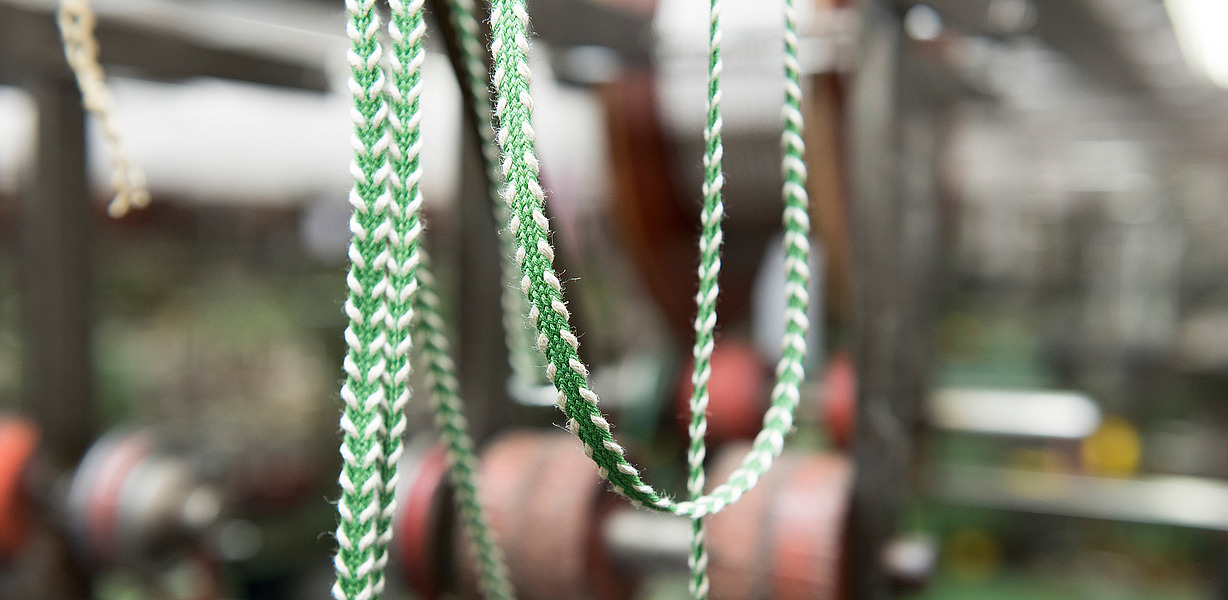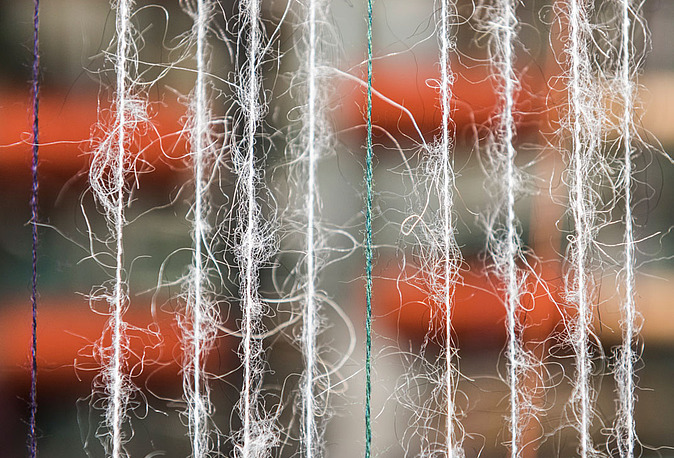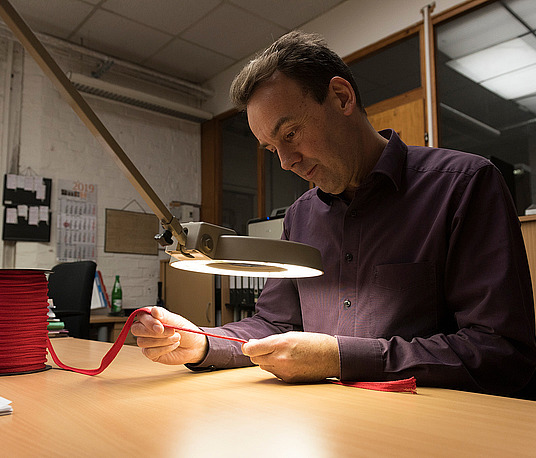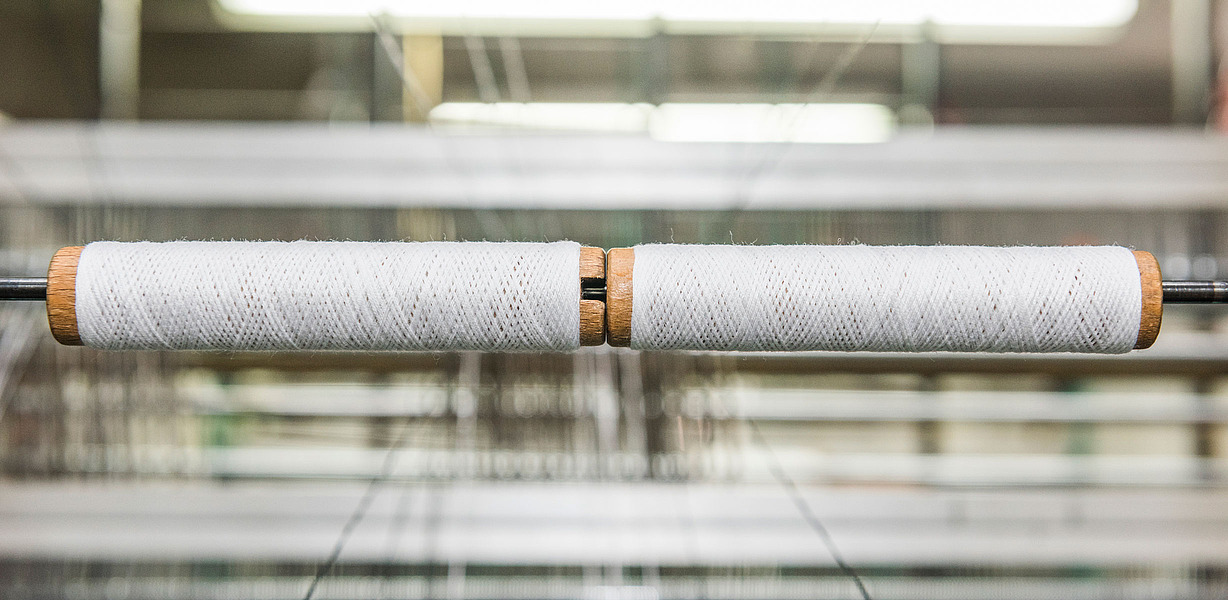
Genuine Egyptian cotton, also known as Giza cotton – derived from the world renowned burial site Gizeh located in the region where it is farmed – is a particularly exquisite material. The threads spun from it are exceptionally fine, soft and, above all, durable, which makes all products made of Giza cotton extremely long lived. There is a good reason why premium cotton from Egypt is considered one of the finest, most sought-after and, at the same time, most expensive kinds of cotton in the world. Despite its many advantages, only a very limited amount of Giza-type cotton is produced due to high demands in terms of soil quality and climate. It only accounts for a small percentage of global cotton production with a market share of under 5 per cent.
Due to its exceptional durability, it is also more resistant when under tension, which makes it ideal for the manufacture of braided articles such as piping, cords or galloons. That’s why at FRIEBA we only use high-quality Egyptian cotton to manufacture our products.
What makes Egyptian cotton so special?
The reason for the high tensile strength of Giza cotton compared to other kinds of cotton lies, first of all, in its long fibres (pile length). And the plant only develops them under the right conditions. The subtropical climate in Egypt’s growing regions is perfect for this. The length of the cotton fibres determines how fine a thread can be spun without sacrificing tensile strength. Threads made of 100 per cent Egyptian cotton have a particularly high tensile strength and the articles made of them are very durable.
Moreover, Egyptian cotton absorbs liquid very readily. This makes it possible to produce threads with richer, more vibrant and resistant dyes. High absorbency is also an advantage with respect to use in various clothing textiles.
What is pile length?
In Egypt, mainly long pile (LP) and extra long pile (ELP) cotton are farmed; they are used, among other things, in fine Mako fabrics. Long pile cotton has a fibre length between 27 and 34 millimetres.
Conversely, conventional cotton – which is used the most worldwide – has a medium pile length of 20 to 28 millimetres. Short pile cotton with a fibre length of under 20 millimetres is the most affordable cotton.
Extra long pile length (> 35 mm):
Origin Egypt, Peru, USA
Long pile length (27–34 mm):
Origin Egypt, Sudan, Peru, USA, India
Moderate pile length (20-28 mm):
Origin USA, Turkey, Brazil
Short pile length (< 20 mm):
Origin East Asia (China, India, Pakistan)


Finishing of raw cotton
Finishing not only increases the quality of the cotton, but also serves to prepare it for spinning. Cotton balls are cleaned in a massive plant. Wax, protein, leaves and plant residue are removed from the cotton. What remains is the cellulose, which is then bleached and later becomes the basis for thread production.
What does mercerise mean?
Mercerisation is another form of cotton finishing. This finishing process is named after the English Chemist John Mercer and serves to improve thread properties and smoothing of fibre coils. In the process, the cotton is treated with lye and stretched. The result is not only stronger and thinner thread, but also the shine, dye absorption, elasticity and tensile strength of the cotton improve.
These structural changes produce a silky shine that is resistant to washing and boasts a higher tensile strength as well as improved dimensional stability. Thanks to the improved dye absorption, the process also requires less dye.

What is carding?
After mercerisation, our cotton is carded. This means that the cotton is ordered and, at the same time, stretched and warped on a roller with numerous small wire hooks. The carding aligns the cotton fibres in one direction and, at the same time, removes any short fibres and impurities. The result is a fine, soft web, which can now be spun into a carded thread or be further finished through combing of the cotton.
Why is cotton combed?
Combing is another important, but not essential step in cotton finishing. Combing can provide a further significant improvement in the quality of the cotton. The more often the cotton is combed, the finer and purer the thread that is later spun from it. During the process of combing, the longest cotton fibres are again separated from the short ones. Additional impurities are removed. Long-pile and extra long-pile cotton is frequently combed multiple times. This cotton is also referred to as super-combed cotton. Thread made from cotton that has been combed once is known as carded thread.